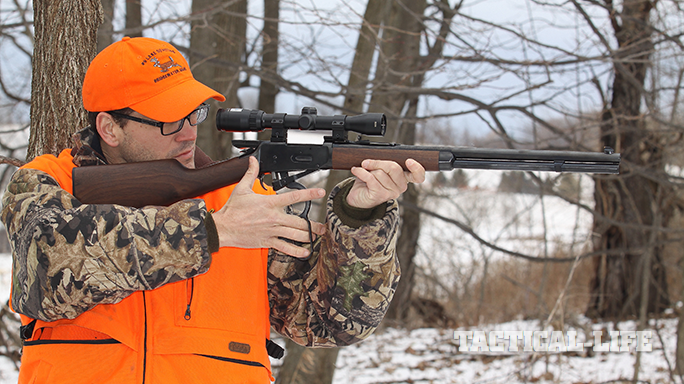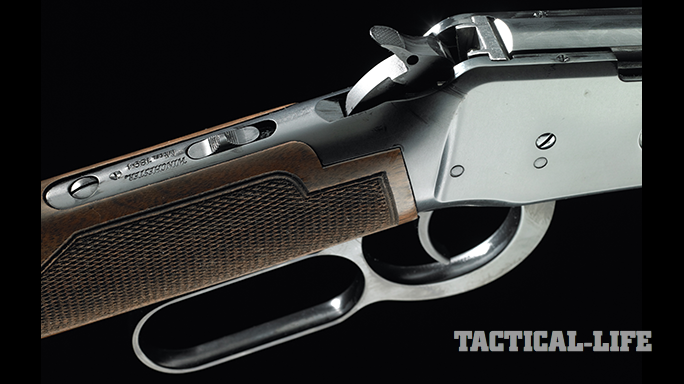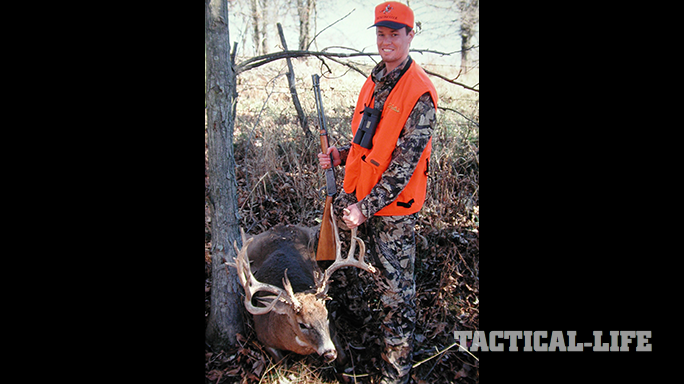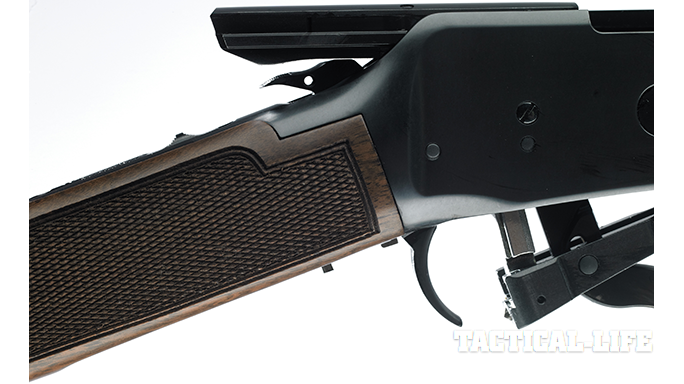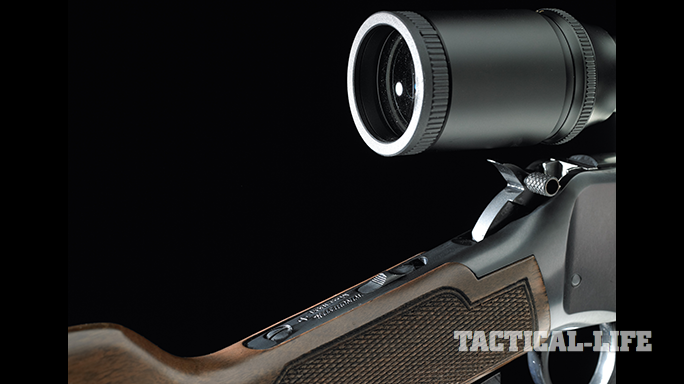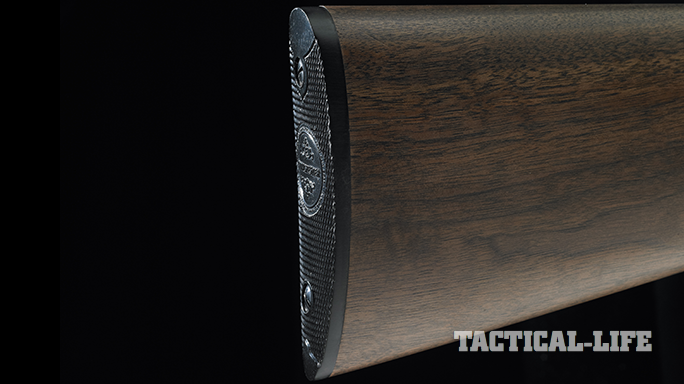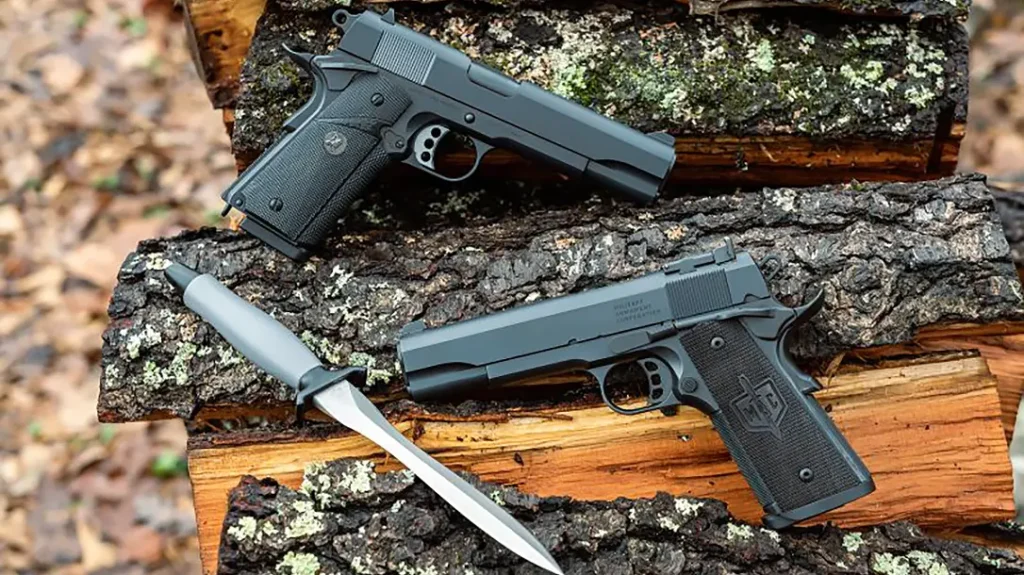It had been a cold, dark night. As dawn neared, he turned east and plodded along the periphery of the swamp, scent-checking his scrape line for the telltale odor of estrous. He stopped to freshen the largest one, dribbling urine over his hocks and onto the freshly pawed earth before moving directly toward an overgrown orchard a couple hundred yards uphill.
Three does were feeding on fallen apples there, but, one by one, each bolted from the buck’s amorous advances. This was his third autumn, and after the 10-pointer sniffed each of their trails, the buck knew that the does were not yet in estrous. He did not give chase but instead turned and worked his way along a hardwood ridge strewn with fallen acorns, stopping only long enough to vacuum up a few of the oblong morsels before continuing on in his seemingly never-ending search for a doe in heat.
He eventually came to the edge of a steep and brush-strewn ravine that ran up and down the hillside. He was about to turn and trot up toward the peak when suddenly he stopped, flared his nostrils and breathed in through his open mouth. Estrous. He lowered his head and rushed across the ravine and then up the far side, where he quickly picked up the scent trail of a hot doe. Moving purposely now with his nose to the ground and his tail extended, the 10-pointer wasted little time catching up to the estrous female. She was moving toward a thick stand of white pine that grew wild near the top of the next ridge, where she planned on bedding down for the rest of the day. She heard the buck grunt and looked back at him over her shoulder. With ears erect, she watched as the buck carefully approached her with his nose to the ground. She urinated and moved away, allowing the buck take a few cautious steps in her direction. He sniffed her urine, then she turned and walked away with the buck in tow.
Advertisement — Continue Reading Below
“Instinctively, the old man brought his .30-30 to his shoulder and, peering through the buckhorn rear sight, lined up the front bead on the racked deer as it raced after the doe. Bang!”
The old man was sitting on a log 100 yards distant, and he watched with keen interest as the pair of whitetails weaved their way through the thick brush. Believing they were going to go by him without offering him a shot, he crouched low and stalked in their direction, holding his Winchester 94 tightly in his right hand. At 50 yards the doe sensed something was amiss. Maybe she caught the old man in mid step, or maybe an errant breeze tipped her off to his presence. In any event, she suddenly bolted and with long strides streaked past the old man. The buck, confused as to what was happening, snorted and took off behind her.
Instinctively, the old man brought his .30-30 to his shoulder and, peering through the buckhorn rear sight, lined up the front bead on the racked deer as it raced after the doe. Bang! The buck stumbled but regained his footing and continued on up the hill. The old man quickly levered in a second round and fired. Then a third round was triggered as the buck hightailed it through the brush. All was then quiet for a few seconds before a loud crashing echoed back down the hillside. The old man leaned against a nearby tree and listened intently for a minute or so, but the North Woods remained eerily quiet. Thirty minutes later he found the buck piled up with two .30-caliber entrance holes in his chest, an inch apart.
Advertisement — Continue Reading Below
The Original
The iconic Winchester Model 94 lever-action, the rifle so often portrayed in Western movies, is undoubtedly the most famous firearm in American history. And with over 7,000,000 guns manufactured to date, it may even be the most famous in the world. John Browning first introduced it in August 1894, under patent number 524704, as a blackpowder lever-action rifle chambered for the .32-40 and .38-55 calibers. The steel in these early versions could not withstand the pressures of the recently introduced smokeless powders, but in August 1895, a new steel—nickel steel—was employed, and with that all hell broke loose. The Model 94 was soon chambered for the .30-30 and the .25-35 rounds, and later the .32 Special. It was the .30-30 version that gained the most attention, however. It propelled a 165-grain bullet at 1,970 fps with only 30 grains of the new powder, making it the first sporting round to be loaded with a smokeless propellant. The barrel was 26 inches long, and the rifle weighed in at about 8 pounds. A carbine was also offered with a 20-inch barrel and weighed a pound and a half less. The cost? It was $18 for either model in 1895.
The smokeless Model 94 was an instant hit because it offered less recoil and a flatter trajectory when compared to the cumbersome, big-caliber rifles, like the .45-70, available at the time, and because there was no smokescreen to contend with after the shot. The flatter trajectory also meant it was simply more accurate at longer ranges, out to 250 yards when placed in the hands of a competent shooter. Indeed, many sources still claim that more whitetail deer have been dropped with the Model 94 .30-30 than any other rifle/caliber combination in history, and I have no reason to doubt it.
Advertisement — Continue Reading Below
“Production of the Model 94 temporarily ceased in 2006 when the U.S. Repeating Arms factory in New Haven, Connecticut was closed. Production of Winchester Model 94s commenced again in 2010 with current models being manufactured by Miroku in Japan,” said a Winchester spokeperson. Moraku was a logical choice because it has been making quality Winchester lever actions for Browning since the mid-1990s.”
Gun Details
I chose to field-test the Winchester Model 94 Short rifle because, well, at 20 inches its barrel is 4 inches shorter than the Sporter’s, making it easier to swing in thick brush, and the Short rifle also weighs a measly 6.8 pounds unloaded, making it a joy to tote around all day long in the deer woods. Besides, the deeply blued, round barrel, coupled with a full-length magazine, straight-grip walnut stock, rifle-style forearm and black grip cap, looks good, too. You will have to visit an aftermarket gun shop, however, to install the fore and aft tackle to fit a sling if you desire one.
Advertisement — Continue Reading Below
Old-time Winchester aficionados will quickly notice that the safety is now on the tang. “The crossbolt design was discontinued in 2003,” Thompson added. “Drilling holes into the receiver was just not aesthetically pleasing.” I like the tang version better than the crossbolt for utilitarian reasons. It is infinitely easier and quieter to engage and disengage in the deer woods. The sights on the Model 94 Short are traditional, with a semi-buckhorn rear and a Marble gold bead at the business end. I wanted to scope this gun, however, and fortunately I did not need to drill holes into the receiver to mount a quality set of optics with aftermarket rings and bases. The scope-friendly Model 94 Short is already drilled and tapped for a scope, and a hammer-spur extension is included in the box with each rifle.
I wanted to fit the rifle with a quality scope for hunting deer at short to medium ranges in the thick stuff, so I chose the compact, low-profile Bushnell Elite 2-7x32mm Multi-X scope for the task—and I was not disappointed. The Elite 2-7x32mm features a 1-inch, one-piece, argon-purged tube that is 100-percent waterproof, fog-proof and shockproof. The fully multi-coated optics feature magnum-recoil-proof construction. The Elite also features 0.25-MOA, audible and resettable windage and elevation adjustments, making it very easy to sight in at the range. Indeed, Doug Turnbull restorations mounted and then bore-sighted the scope for me before I picked it up. Using Hornady’s 160-grain LeveRevolution FTX ammunition, I was immediately on paper at 50 yards. Soon I found myself shooting 1-inch groups out to 100 yards.
Taking Trophies
Advertisement — Continue Reading Below
As the pre-rut winds down and the rut begins to peak, racked bucks rely less and less on scrapes and scrape lines to help them locate a doe near estrous. Instead, a buck seeks does where they feed and bed and along the trails they use to connect the two. In effect, rutting bucks begin to hunt the does, and that is what you should do if you want to increase your chances of affixing your tag on a buck caught up in the frenzy to breed.
One foolproof plan is to locate a suitable vantage point overlooking a known doe-feeding area, such as a cornfield in farm country or a flat, hardwood ridge laden with mast in the big woods. Then wait for first light to illuminate the area. Family groups of does, yearling females and fawns should still be milling around gobbling up mast. Do not disturb them, but keep a watchful eye on the edges of the ridge and any gentle slopes that lead up or down to the plateau. This is where a racked buck is likely to appear. Don’t get discouraged, however, and make an exit too soon. A buck looking for love can make an appearance any time here during legal shooting/hunting hours.
A secondary food source does utilize on their way to a bedding area is also a good bet for an ambush. Sometimes it is a single apple tree or a cluster of oak trees with a fair amount of acorns littering the ground. If you can’t get to your primary ambush site before first light, this may produce for you just as well. Trails does use to reach their bedding area are another good location for an ambush. The problem is that some feeding areas have multiple exit trails. Which trail should you pay attention to? A buck may indeed follow a doe from a feeding area to her bedding area, and if you have set up on the right trail, your chances of shooting him can be quite good. However, bucks will also scent-check several exit trails at a time, as evidenced by a rub or scrape line that intersects those doe exit trails at right angles. Any place of intersection that harbors a scrape or a cluster of rubs is a good place to concentrate your efforts.
Advertisement — Continue Reading Below
I prefer to still-hunt along the buck route by staying downwind. In hilly country, this usually means uphill from the buck’s trail in the morning and downhill from the buck’s trail in the evening. Why? You must take the morning and evening thermals into consideration if you have any hope of catching a buck flatfooted as he sneaks about looking for a doe to breed with.
Of course, a vantage point overlooking a known doe bedding area can also produce results, as it did for the old man in the opening scenario. Be there at first light, and plan on staying all day long, especially after a cold front has passed through the area. A buck can show up at any time now, and when he does, your rendition of a doe-in-heat vocalization can often lure him into easy shooting range.
These strategies will get you a close shot at a rutting buck. You do not need a magnum-caliber gun fitted with a high-power scope to get the job done. A Winchester 94 coupled with a mid-range Bushnell variable is light in weight and, with its slim design, easy to carry through the woods and, more importantly, easy to maneuver in tight locations, the places big bucks like to hide. And is the venerable .30-30 up to the task? Come on. With Hornady’s LeveRevolution ammo it is more than enough, and with the gun/scope combination, it’s a proven deer slayer!
Advertisement — Continue Reading Below
For more information, visit winchesterguns.com.
- RELATED STORY: NSSF: Hunting More Affordable Than Most Think
This article was published in the 2015 Gun Buyer’s Guide. To subscribe, please visit PersonalDefenseWorld.com/subscribe.
